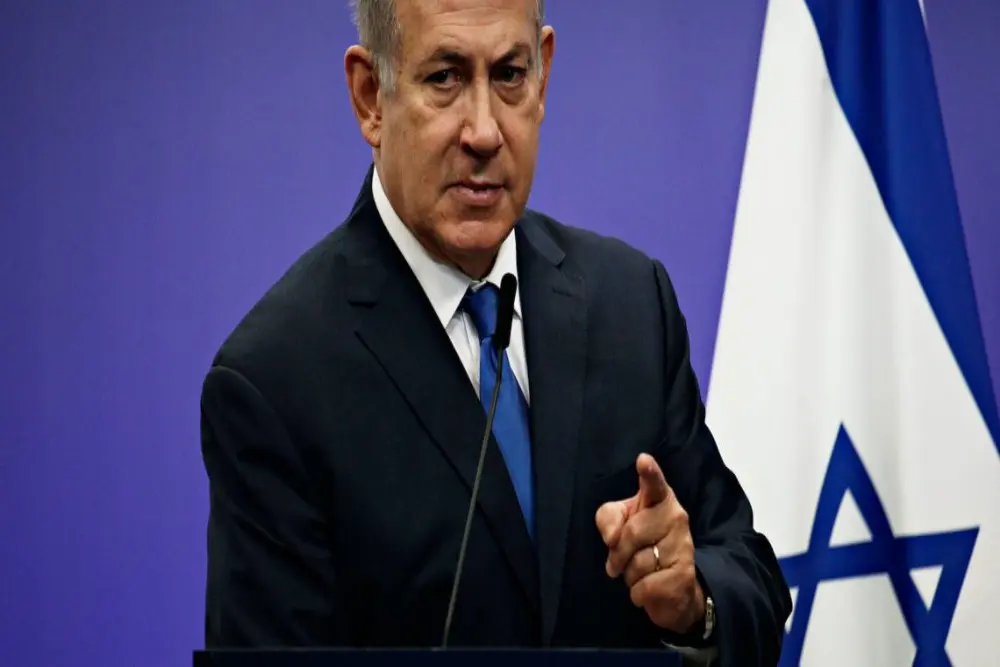
Since the Seventh-October attack on Israeli settlements, Prime Minister, Benjamin Netanyahu, has steadily become less and less popular inside of his own country, and also around world. The speedy decline in Netanyahu’s popularity can be linked to multi factors highlighted in the past 10 months, which in their turn created the biggest divide and chaos inside the Israeli society.
At first, the success of the 7th October attack on Israel is itself is a total failure to Tel Aviv’s Government, Israeli Security Agencies, and the whole Israeli army. These three bodies are eventually lead by Netanyahu and his current cabinet, therefore, a failure with that size is no doubt the responsibility of the Prime Minister himself – A position known for its vast authority and power in Israel. Netanyahu appoints the head of the Intelligence Device, he also appoints the Minister of Defense, however, none of the three previous leaders succeeded in detecting the upcoming attack or repelling it in the right time.
It is not only the failure to deter the attack which made the Israelis discontent and furious, but also the outcome of the attack itself, where an estimated number of 1200 Israelis got killed on the hands of Hamas fighters and about 240 others taken hostages inside of Gaza. These shocking facts has made the Israeli community feeling much insecure and unprotected by Netanyahu’s government and Intelligence Services, a development that would probably end the political career of Netanyahu and every personnel in his cabinet – definitely not at the moment, but once the war is fully over and the judicial system starts reviewing all what happened.. In details.
Furthermore, Israel for the first time in history has lost the media and PR battle globally. Thousands of photos and videos of massacred Palestinian kids and innocent civilians have gone viral all over the internet. These online posts have created an unprecedented public outrage and protests all around the world, from London to New York, from Paris to Istanbul, and from Kuala Lumpur to Rio de Janeiro. Millions of people went to the streets calling for an immediate ceasefire and justice for all the Palestinian civilians massacred by Israel during the past 7 months. It is the first time in history, when leading European governments feel much pressured to vote in favor of a ceasefire in Gaza, despite their close ties with Tel Aviv, and with Netanyahu personally.
In other words, after this day, no one believes Israel is only battling Hamas fighters in Gaza, while in fact it’s publicly waging an “Ethnical Cleansing” operation against the whole Palestinian population, where at least 35,000 civilians have fallen victims before the Israeli war machine – Mainly supported and fueled by Berlin, London and Washington. Two thirds of this shocking figure are women and children, this is not to mention the 90,000 injured Palestinians. These are facts which can never be hidden or ignored, especially with the development of Social Media and its ability to spread filmed news as fast as the light and across any borders, whether geographical or non-geographical.
Therefore, Israel now has no reasonable “defensive theory” that would be suitable for fixing its ruined public image. In fact, Israel is currently facing unprecedented diplomatic and political pressure from the vast majority of world countries, calling to immediately stop the war on Gaza. This global pressure is no-doubt the main reason which made the Israeli army pause its attack on Rafah, the southern and most populated part of Gaza Strip. Another reason is the internal pressure Netanyahu is facing inside of Israel, where tenths of thousands of Israelis protesting and calling the government to negotiate for the still-captured hostages, rather than processing with military action.
Few weeks ago, Hamas announced the unexpected death of some hostages, due to the intense Israeli bombardment on Gaza. Such a development would definitely push Netanyahu towards a wider confrontation with the Israeli Public Opinion, as his priority has never been rescuing the hostages but defeating Hamas in battle. Apparently, Benjamin Netanyahu could not achieve his total military goals after 7 months of war and chaos in Israel, at the same time, he could not save the hostages captured by Hamas till this very day. This means, Netanyahu is becoming more and more of a “questionable leader” inside of his own country, and maybe among his Western allies too. The long-serving Prime Minister is currently battling time over the days, but seems like time has the upper hand in this battle.
Regionally speaking, Netanyahu also made a dangerous mistake when decided to strike the Iranian Consulate in Damascus. A badly-calculated decision that could bring more chaos to Israel and prolong its status of war for many months/years to come. This is not to mention the possibility of dragging Iran into a direct confrontation with Israel, a scenario not in the favor of any of the two regional powers. Just few days after the strike on Damascus, the Iranian military launched the biggest-ever attack on Israel using over 300 missiles and drones, triggering fear among the Israeli community and forcing further instability in its economy and civil life. After the recent escalation in the Middle-East, many Israelis starts to question the clarity of Netanyahu’s decisions, since he deliberately provoked a large regional country as Iran, before ending an ongoing war with the much-weaker Hamas.
Relying on the above arguments, Netanyahu’s leadership has been gradually dragging Israelis into more uncertainty, deeper internal divide, weaker economy, worse global image, and even into wider armed conflicts in the Middle-East. Thus, Isn’t it objective enough to name Benjamin Netanyahu as “Israel’s No.1 threat”?














Comments